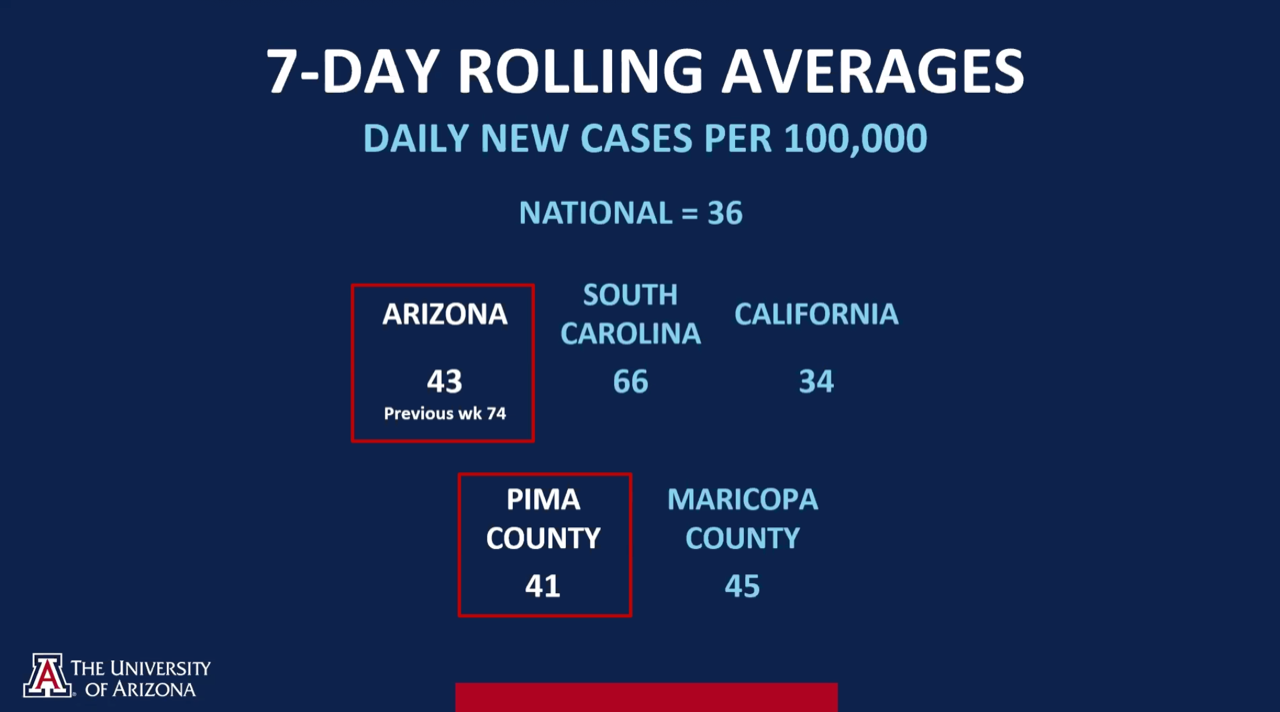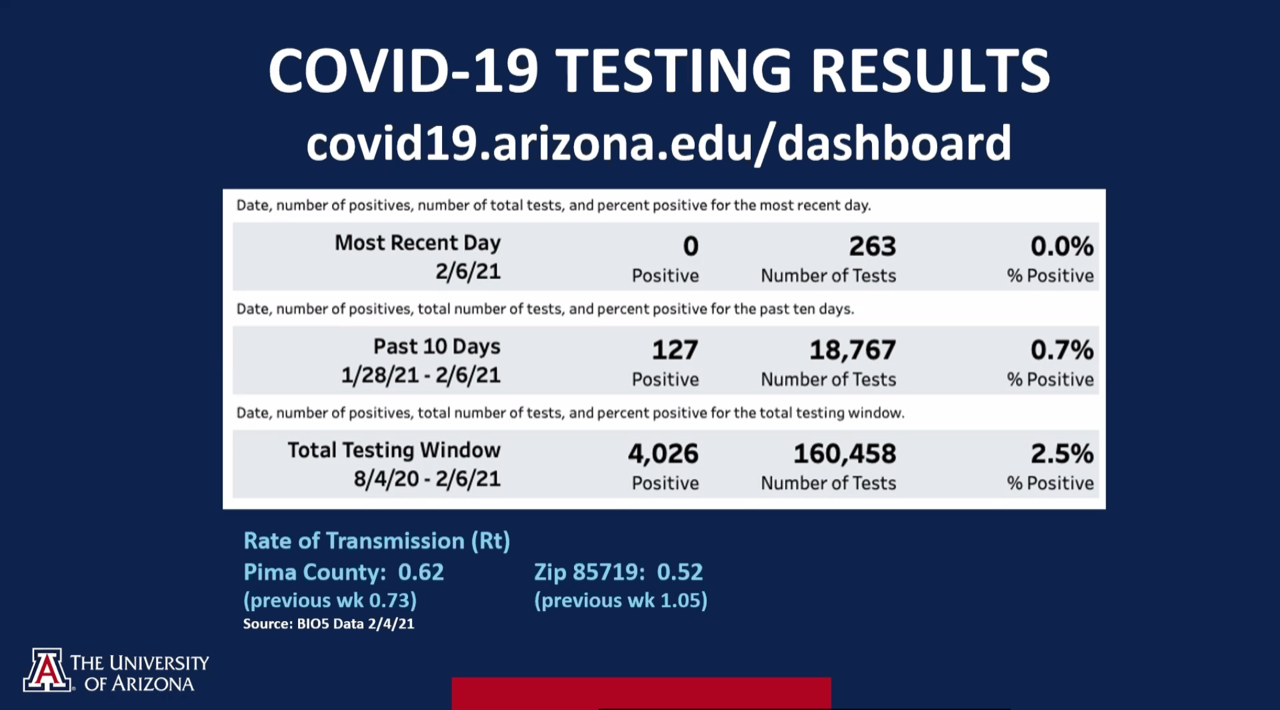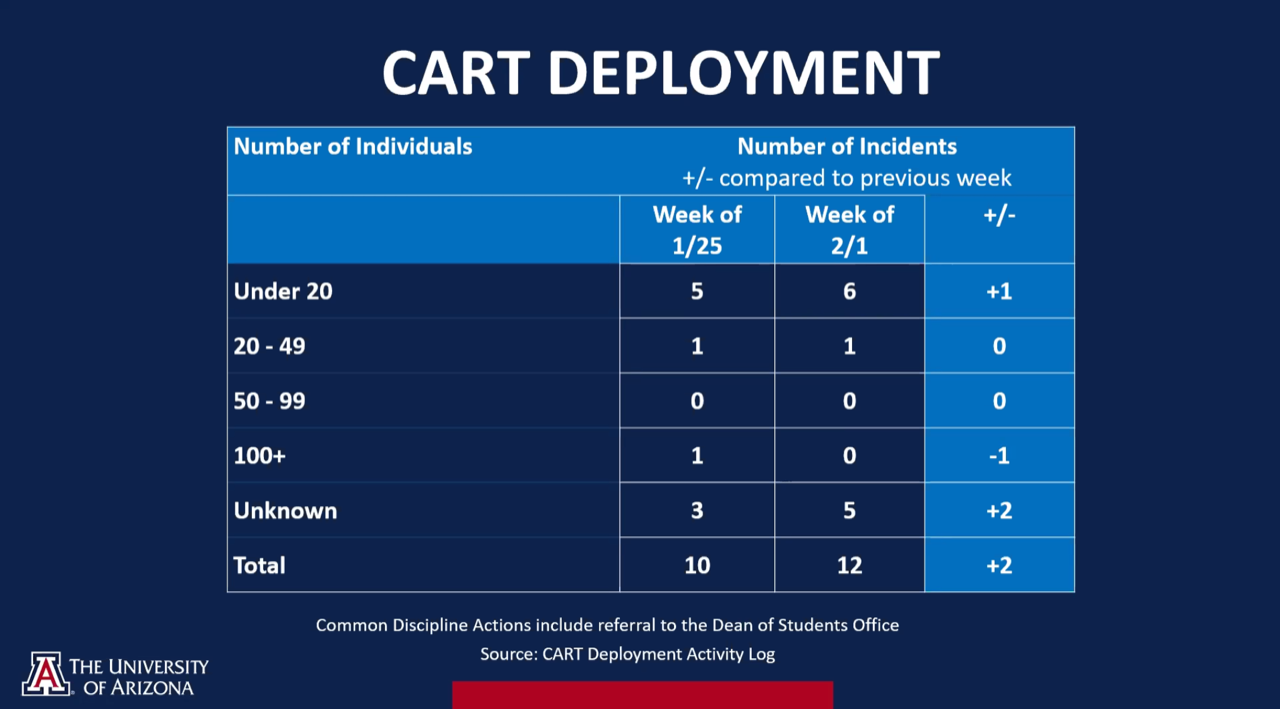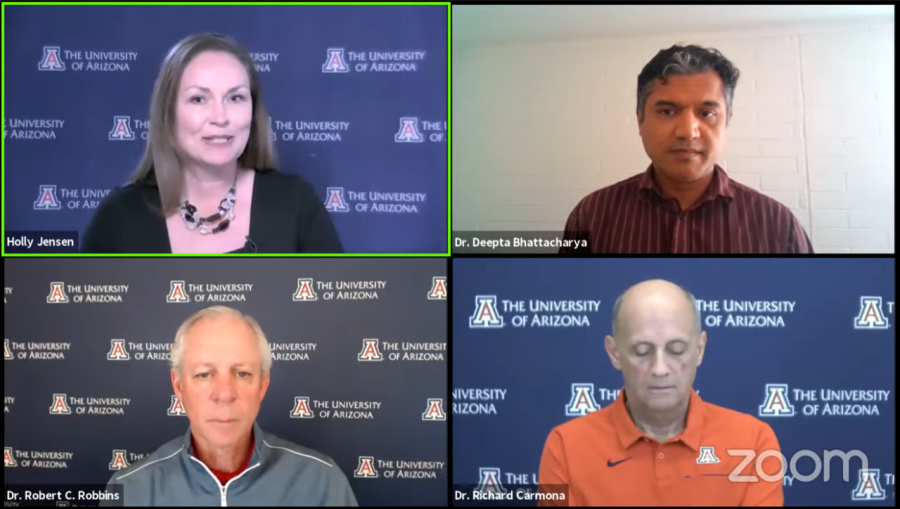The University of Arizona’s COVID-19 virtual university status update team discussed improvements in COVID-19 transmission and was also joined by Deepta Bhattacharya, who discussed the COVID-19 vaccine’s effectiveness on new variants of the virus on Monday, Feb. 8.
For this week and the week of Feb. 15, the UA will remain in Phase 1 of the reentry protocol, which permits only “essential” classes of 50 or less to meet in person.
President Dr. Robert C. Robbins said he anticipates that the university will advance to Phase 2 of the reentry protocol beginning the week of Feb. 22, which will expand in-person instruction to include in-person and flex in-person classes of no more than 50 people.
“We’re following this very closely,” Robbins said. “We’re talking to our public health advisory team. They, of course, would like to see us move it a little bit later, but we’re trying to balance everything and thread the needle here. So as of now, we’re letting everyone know we plan to move to stage 2 Feb. 22.”
Daily cases of COVID-19 per 100,000 individuals continue to fall, and the state of Arizona is no longer the leader in COVID-19 daily new cases.

“These are good signs. However, remain vigilant, continue to cover your face, wash your hands and keep a distance from as many people as possible, and we will continue to see further improvements in the rate of infection,” Robbins said.
The university is rolling back testing requirements to one test per week for students residing on campus. Robbins noted that students with two testing appointments this week may cancel their second appointment.
Testing compliance will be enforced through Wi-Fi privileges starting this week. Students who do not receive their COVID-19 test this week will lose access to UA Wi-Fi next week until they get tested.
From Jan. 28 to Feb. 6, the UA conducted over 18,000 COVID-19 tests which returned 127 positives, a positivity rate of 0.7%.

“As Dr. Robbins has said, our goal is always to stay below 5%, and we’ve done that pretty consistently,” said task force Director Dr. Richard Carmona. “We shouldn’t be complacent because of that, but it shows that our programs are working well to try and contain this.”
The rate of transmission of COVID-19 was 0.62 at the county level and 0.52 for the university zip-code, the latter of which is down nearly 50% from the previous week’s reported Rt. The task force wants to see the university’s Rt below the 1.0 threshold.
The Campus Area Response Team was deployed to 12 incidents of large gatherings, up by two incidents from last week. Six of these incidents were gatherings of under 20 individuals, and one of these incidents was a gathering of 20-49 individuals.

Bhattacharya, associate professor of immunobiology at the UA, joined the virtual university status update team to speak about the efficacy of currently available COVID-19 vaccines against new variants of the virus.
“As President Robbins said at the beginning, there are two things to think about in terms of the vaccine. There’s the protection to self and to others,” Bhattacharya said. “When your turn comes up, we encourage you to take it. There is real-world evidence that despite the fact that B.1.1.7 is of concern, we can stay out ahead of it if we get the vaccines in the arms fast enough.”
RELATED: New coronavirus strain B.1.1.7 to be dominant by March, CDC says
The B.1.1.7 variant of COVID-19 was first identified in the United Kingdom and transmits 20-50% faster than the original variant. You can hear more about the other variants and the available vaccines’ effectiveness against them by listening to the VUSU livestream on YouTube.
The next status update will be held on Monday, Feb. 15.
Follow Kristijan Barnjak on Twitter









